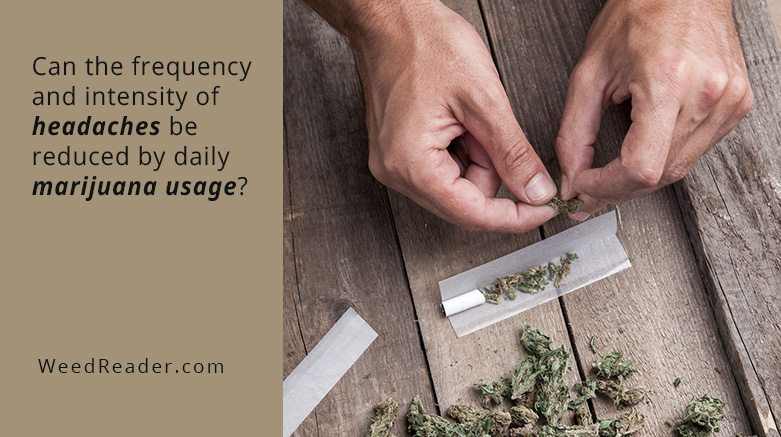Can the frequency and intensity of headaches be reduced by daily marijuana usage?
The use of cannabis as a treatment for a headache is nothing new. In fact, about a century ago, western doctors were prescribing cannabis to their patients suffering from various ailments including migraine headaches. The results of a new study may give reason for the return of these prescriptions in the 21st century.
History of marijuana as treatment for migraine headaches
Prior to marijuana’s widespread prohibition in the early 1900’s, British and American doctors were prescribing the plant to treat a variety of medical conditions including headaches. Dr. J.R. Reynolds, the court physician to Queen Victoria in 1890 wrote about using cannabis to treat migraine and other ailments. One year later, American doctor J.B. Mattison’s research concluded that marijuana was capable of both preventing pain from headaches along with their frequency. Several years later a Canadian physician by the name of William Osler published a book and agreed with J.B. Mattison claiming that for migraines, “cannabis indica is probably the most satisfactory remedy.”
This may soon become the discussion among physicians again since the first clinical trials of medical marijuana’s effect on migraine headaches, published earlier this year, illustrated medical benefits for patients suffering from migraine headaches.
Can cannabis use reduce the amount of headaches one suffers from?
According to the study published by Skaggs School of Pharmacy and Pharmaceutical Sciences at the University of Colorado Anshutz Medical Campus, the use of medical cannabis can indeed reduce the frequency of migraines headaches for some chronic sufferers.
The study reveals that 39.7% of the migraine sufferers given medical marijuana reported positive effects, the main one being a reduction in the frequency of migraine headaches. About a fifth of the patients reported a reduction in migraine frequency and more than a tenth of them reported the complete stop of their migraine headache. The only negative effects reported were experienced by users who ingested edible marijuana as opposed to other forms. It was found that inhalation provided the most immediate relief to an ongoing migraine. This may be due to something called the entourage effect: the combination of multiple cannabinoids such as cannabidiol (CBD) or THC for added medical benefits. Despite the evidence of better treatment from smoking over other methods, many states that allow medical marijuana still prohibit the selling and use of the raw plant for smoking.
“One of the superiorities of smoking or vaporizing cannabis is quick onset of relief. Because smoked or vaped marijuana is immediately absorbed into the blood stream by the lungs, where it enters the heart and is transported directly to the brain, cannabis can begin to help patients within a little as two-and-a-half minutes of consumption.” – Gooey Rabinski, Advocate for Cannabis Patients.
The inhalation of cannabis provides sufferers of migraines with faster relief and less negative side effects when compared to edibles and other methods of pain relief.
Alternative to painkillers
Other forms of medication for headache relief such as aspirins come with a multitude of harmful side effects. “Common side effects of Bayer Aspirin include rash, gastrointestinal ulcerations, abdominal pain, upset stomach, heartburn, drowsiness, headache, cramping, nausea, gastritis, and bleeding.” These side effects are much more harmful to patients than the ones associated with marijuana usage. With the first clinical trials of medical marijuana on migraine patients revealing positive results, we’re hopeful that patients will be able to access a safer alternative to painkillers sooner than later.





